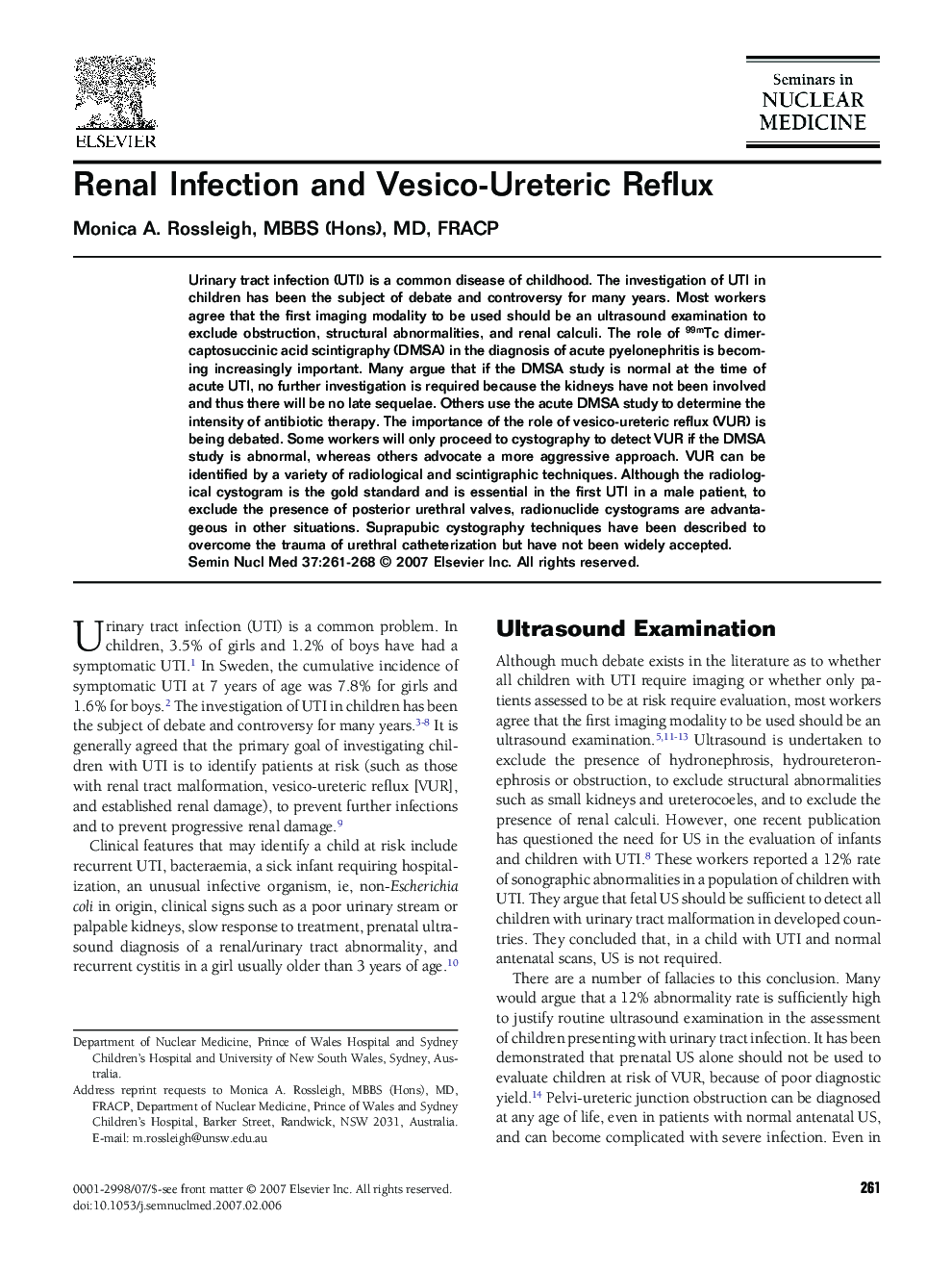| Article ID | Journal | Published Year | Pages | File Type |
|---|---|---|---|---|
| 4251253 | Seminars in Nuclear Medicine | 2007 | 8 Pages |
Urinary tract infection (UTI) is a common disease of childhood. The investigation of UTI in children has been the subject of debate and controversy for many years. Most workers agree that the first imaging modality to be used should be an ultrasound examination to exclude obstruction, structural abnormalities, and renal calculi. The role of 99mTc dimercaptosuccinic acid scintigraphy (DMSA) in the diagnosis of acute pyelonephritis is becoming increasingly important. Many argue that if the DMSA study is normal at the time of acute UTI, no further investigation is required because the kidneys have not been involved and thus there will be no late sequelae. Others use the acute DMSA study to determine the intensity of antibiotic therapy. The importance of the role of vesico-ureteric reflux (VUR) is being debated. Some workers will only proceed to cystography to detect VUR if the DMSA study is abnormal, whereas others advocate a more aggressive approach. VUR can be identified by a variety of radiological and scintigraphic techniques. Although the radiological cystogram is the gold standard and is essential in the first UTI in a male patient, to exclude the presence of posterior urethral valves, radionuclide cystograms are advantageous in other situations. Suprapubic cystography techniques have been described to overcome the trauma of urethral catheterization but have not been widely accepted.
